Email marketing is an essential tool for businesses aiming to engage with their customers, drive sales, and build brand loyalty. Among the myriad of email service providers, SendGrid and Mailgun stand out as two of the most prominent names in the industry. Both offer powerful tools for managing email campaigns, but they cater to slightly different audiences and excel in different areas. This comprehensive comparison will delve into the key features, strengths, and weaknesses of SendGrid and Mailgun, helping you determine which platform best suits your email marketing needs.
Key Facts
- SendGrid offers a user-friendly interface with comprehensive marketing features, making it suitable for both developers and marketers.
- Mailgun is known for its developer-friendly APIs and superior email validation capabilities, ideal for businesses with technical expertise.
- Both platforms provide high deliverability rates and scalability but differ in their approach to customer support and pricing models.
Detailed Feature Comparison
When it comes to email marketing software, SendGrid and Mailgun are two of the most prominent names in the industry. Both offer powerful tools for businesses to manage their email campaigns, but they cater to slightly different audiences and excel in different areas.
SendGrid, founded in 2009, has built a reputation for its comprehensive email marketing features and user-friendly interface. As noted by One Hour Professor, “SendGrid offers a drag-and-drop editor designed for both developers and marketers, making it accessible to users with varying levels of technical expertise.” This versatility has made SendGrid a popular choice for businesses of all sizes.
On the other hand, Mailgun, established in 2010, has positioned itself as a developer-centric platform. According to ToolJet, “Mailgun is built for developers, offering simple email API integration with various programming languages.” This focus on technical users has allowed Mailgun to create a niche for itself in the market.


Email Deliverability
Ensuring your emails reach the intended recipients is paramount for any email marketing strategy. Both SendGrid and Mailgun prioritize high deliverability rates through various advanced features.
- SendGrid: Offers dedicated IP addresses and IP warm-up plans to enhance deliverability. Additionally, SendGrid provides real-time analytics to monitor email performance, allowing users to address potential deliverability issues proactively.
- Mailgun: Excels with its advanced Email Validation API, which verifies email addresses in real-time. This reduces bounce rates and ensures that only valid email addresses receive your campaigns, thereby improving overall deliverability.
User Interface and Ease of Use
The user interface plays a crucial role in the ease of managing email campaigns.
- SendGrid: Renowned for its intuitive dashboard and pre-built forms and templates. The drag-and-drop editor is designed for both developers and marketers, making it accessible to users with varying levels of technical expertise.
- Mailgun: While highly powerful, Mailgun has a steeper learning curve due to its developer-centric approach. It’s tailored for users comfortable with APIs and coding, which might be challenging for non-technical users.
Pricing and Scalability
Choosing a service that aligns with your budget and can scale with your business growth is essential.
- SendGrid: Offers a free plan that includes 40,000 emails for the first month, then 100 emails/day. Paid plans start at $15/month, making it accessible for small businesses while offering scalability for larger enterprises.
- Mailgun: Utilizes a pay-as-you-go pricing model, which is cost-effective for varying email volumes. This flexibility allows businesses to scale efficiently as they grow.
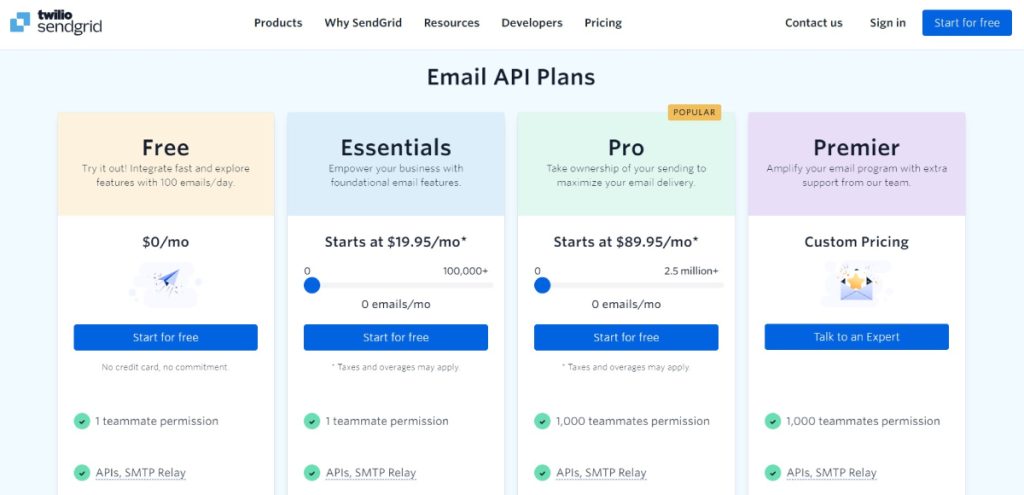
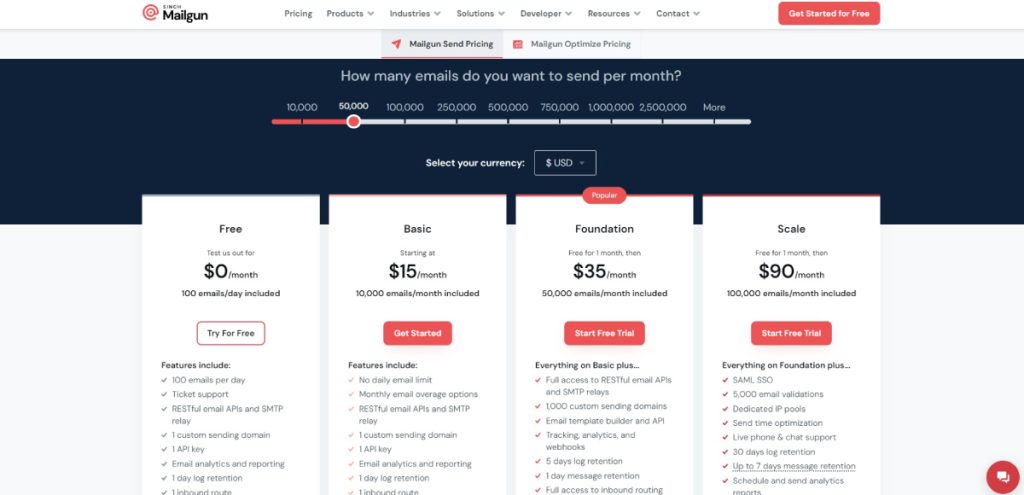
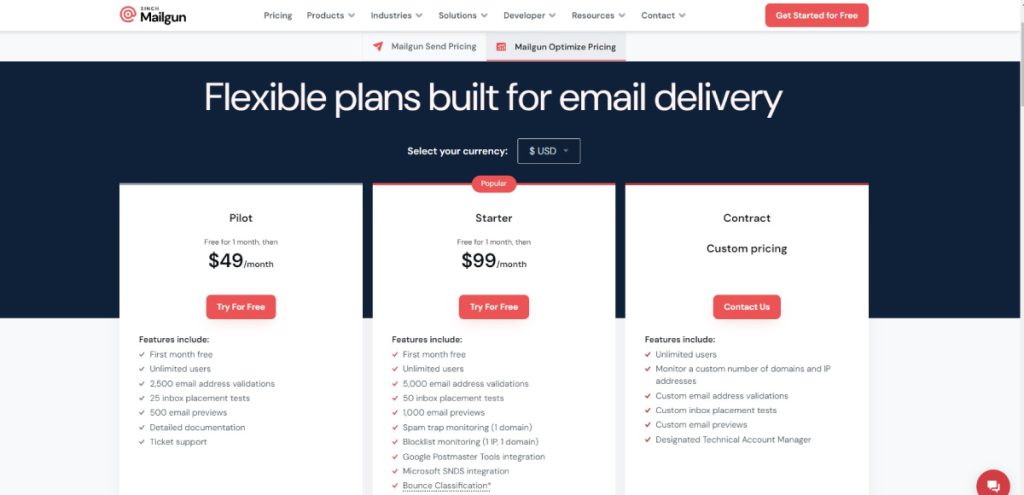
Customer Support
Reliable customer support can make a significant difference in resolving issues and optimizing email campaigns.
- SendGrid: Provides multiple support channels, including email, chat, and phone support. Advanced support is available on higher-tier plans, and it is rated 7.7/10 on G2 for customer support.
- Mailgun: Offers 24/7 ticket support with premium options for higher-tier plans. It holds a slightly higher rating of 8.7/10 on G2 for customer support.
Additional Features
Beyond the basics, both platforms offer unique features that cater to different business needs.
- SendGrid: Excels with its comprehensive marketing automation tools, advanced segmentation options, and a variety of customizable email templates. It also offers separate plans for marketing campaigns with features like A/B testing.
- Mailgun: Shines in its email routing capabilities, inbound email handling, and advanced queue management. It provides dedicated technical account managers and deliverability consultants for higher-tier plans.
Hidden Gems: Lesser-Known but Highly Effective Strategies
Beyond the well-known features, both SendGrid and Mailgun offer hidden gems—strategies that are not widely recognized but can significantly enhance your email marketing efforts. Here are five such strategies to consider:
Utilize SendGrid’s Adaptive Communication Engine
SendGrid’s Adaptive Communication Engine automatically optimizes email delivery based on recipient engagement patterns. By analyzing how recipients interact with your emails, this feature adjusts send times and content to improve overall deliverability and engagement.
Implement Mailgun’s Email Validation API in Real-Time
Integrate Mailgun’s Email Validation API directly into your sign-up forms. This real-time verification ensures that only valid email addresses are added to your list, significantly reducing bounce rates and enhancing list quality.
Exploit SendGrid’s Sandbox Mode
SendGrid’s sandbox environment allows you to test your email campaigns without sending actual emails. This feature is invaluable for perfecting your strategies and ensuring that your emails render correctly before going live.
Harness Mailgun’s Inbound Email Routing
Mailgun’s inbound email routing feature enables the creation of interactive email applications, such as support ticketing systems or email-based workflows. This can enhance customer service and streamline internal processes.
Exploit SendGrid’s Dynamic Templates
SendGrid’s dynamic templates allow you to create highly personalized emails that adapt content based on recipient data. By tailoring the content to individual preferences, you can significantly improve engagement rates.
Innovative Solutions by Prism Reach
While SendGrid and Mailgun offer robust email delivery services, Prism Reach introduces a groundbreaking approach to email marketing. Prism Reach’s AI-powered SaaS solution provides highly personalized newsletters, taking email marketing to the next level.
Prism Reach’s key benefits include:
- Increased Engagement: AI-powered personalization results in up to 40% higher engagement rates by tailoring content to individual subscriber preferences.
- Higher Revenue: Targeted advertising and efficient content targeting lead to higher monetization rates for published newsletters.
- Improved Productivity: Automation and AI-driven insights reduce the time required to create and manage campaigns, allowing teams to focus on strategy and creativity.
Prism Reach bridges the gap between the technical prowess of platforms like Mailgun and the marketing-friendly features of SendGrid, while adding an extra layer of personalization and engagement through its advanced AI capabilities.
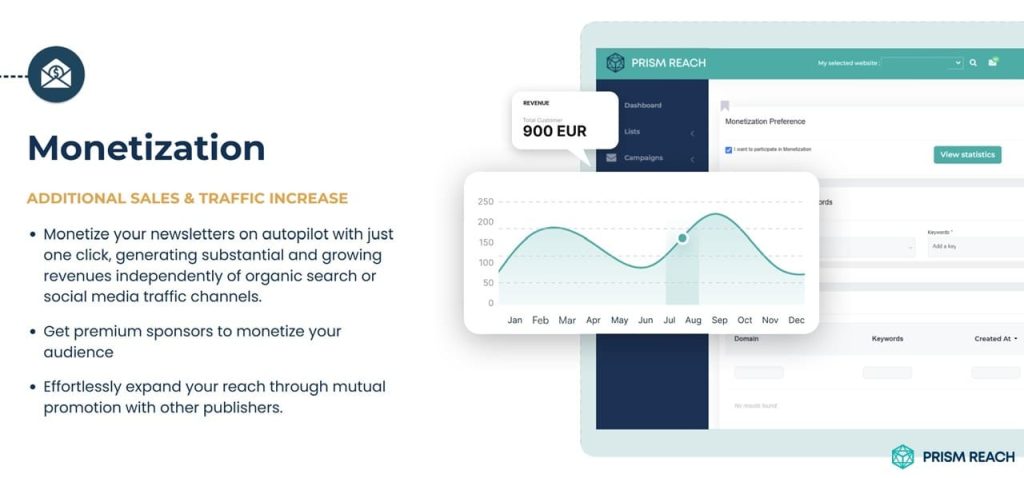
Potential Benefits of Prism Reach
- Deep Personalization: Prism Reach uses AI to create detailed user avatars, enabling highly personalized newsletter content that resonates with each subscriber.
- Advanced Analytics: The platform provides granular insights into campaign performance, helping you make data-driven decisions to optimize your email marketing strategies.
- Seamless Integration: With quick setup and one-click uploads, Prism Reach integrates effortlessly with your existing systems, ensuring a smooth transition and minimal disruption to your workflow.
Practical Tips for Enhancing Email Marketing Strategies
Optimize Deliverability with Advanced Features
Both SendGrid and Mailgun offer advanced features that can significantly improve your email deliverability:
- SendGrid’s Adaptive Communication Engine: Automatically adjusts send times and content based on recipient engagement patterns.
- Mailgun’s Email Validation API: Ensures only valid email addresses receive your campaigns, reducing bounce rates.
Leverage Hidden Gems for Maximum Impact
Utilizing lesser-known features can give your email marketing campaigns a competitive edge:
- SendGrid’s Sandbox Mode: Test your campaigns without sending actual emails to perfect your strategy.
- Mailgun’s Inbound Email Routing: Create interactive email applications like support ticketing systems.
- SendGrid’s Dynamic Templates: Personalize email content dynamically based on recipient data.
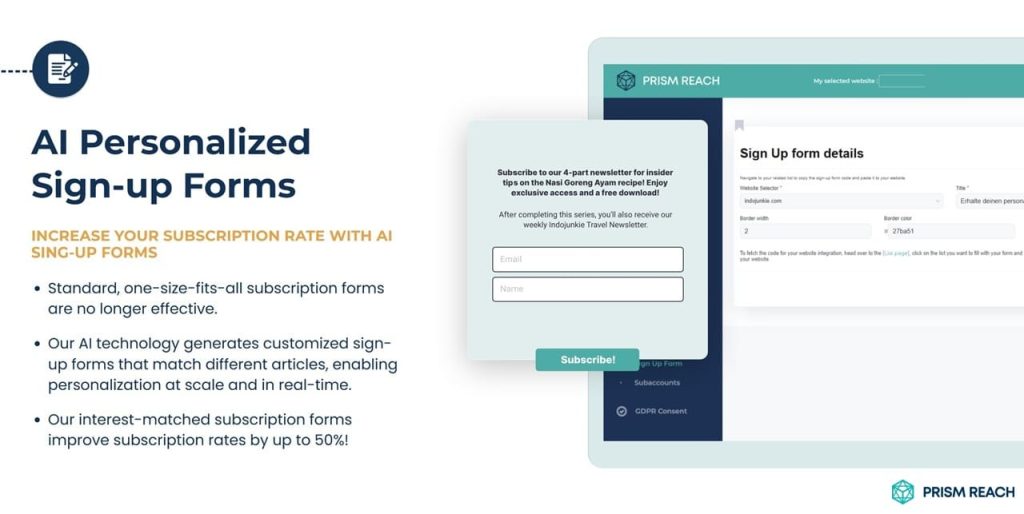
Integrate Prism Reach for Enhanced Personalization
To take your email marketing to the next level, consider integrating Prism Reach:
- AI-Powered Personalization: Tailor every aspect of your newsletters based on subscriber behavior and preferences.
- Seamless Setup: Integrate Prism Reach within minutes, allowing you to quickly enhance your email marketing efforts.
- Dynamic Content Selection: Automatically select the most relevant content for each subscriber, increasing engagement and retention.
Upgrade Your Email Marketing with AI Personalization!
FAQ
Conclusion
Both SendGrid and Mailgun offer powerful email delivery services with distinct strengths. SendGrid excels in user-friendliness and comprehensive marketing features, making it ideal for businesses looking for an all-in-one email marketing solution. Mailgun, with its developer-centric approach and superior email validation, is perfect for technically-inclined teams handling large email volumes.
The choice between SendGrid and Mailgun ultimately depends on your specific business needs, technical requirements, and budget. However, for businesses seeking to take their email marketing to the next level with hyper-personalization and AI-driven insights, Prism Reach offers an innovative alternative. By combining the best of both worlds and adding unique features for enhanced engagement and revenue generation, Prism Reach stands out as a comprehensive solution for modern email marketing challenges.
Upgrade your email marketing with AI personalization and switch to Prism Reach now to experience unparalleled engagement and efficiency in your campaigns.
Sources
- Courier.com. (2024). Mailgun vs SendGrid: An email provider comparison. Retrieved from https://www.courier.com
- Mailgun. (2024). Mailgun vs. Sendgrid – Compare Top Email Providers. Retrieved from https://www.mailgun.com
- OneHourProfessor. (2024). Mailgun vs. SendGrid 2024: What email tool comes out on top? Retrieved from https://www.onehourprofessor.com
- Mailtrap.io. (2024). SendGrid vs Mailgun: Find out which is better for you. Retrieved from https://www.mailtrap.io
- SoftwareAdvice. (2024). Mailgun vs SendGrid: 2024 comparison. Retrieved from https://www.softwareadvice.com